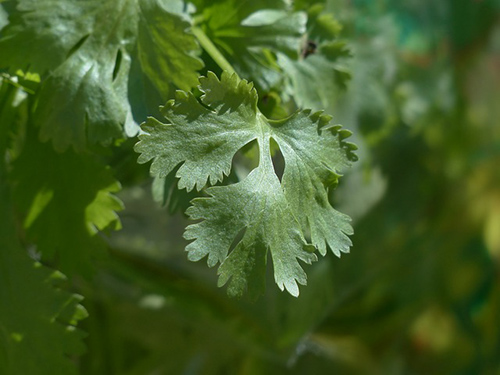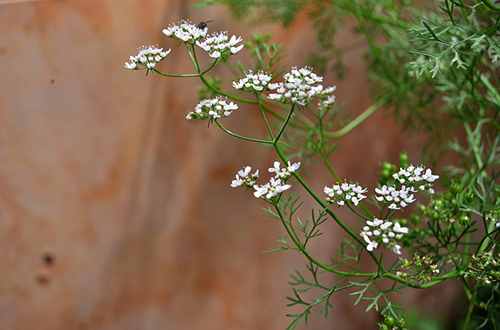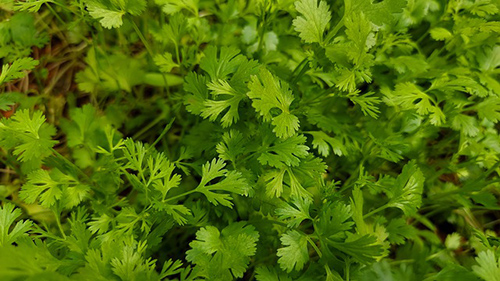Contents

The coriander plant has been used medicinally for a long time, and both the Assyrians and the Egyptians used it. The plant can provoke toxic effects on the nervous system (drunkenness) when taken in high doses. Coriander is highly appreciated as a seasoning as well.
Coriander Plant Scientific Facts
- French: Coriandre.
- Spanish: Cilantro.
- Environment: Native to eastern Mediterranean countries, it spread and cultivated throughout Europe and America.
- Description: Herbaceous plant of the Umbelliferae family that grows from 20 to 60 cm high, with white or pink flowers. Its round fruits are from 3 to 5 mm in diameter.
- Parts of the plant used medicinally: Only ripe fruits.
Healing Properties and Warning

The fruits of the coriander plant contain an essential oil rich in linalool, the active component to which the plant owes its properties.
- Eupeptic: It promotes digestion.
- Carminative: Eliminates gas.
- Mild invigorator of the nervous system when taken in small doses.
Although this property has not been proven, Coriander has been used as a vermifuge. In any of its methods, coriander is recommended for the following conditions:
- Digestive disorders: Gastritis, pancreatic insufficiency, bloated stomach, lack of appetite, flatulence.
- Recovery from infectious diseases, as an invigorator and stimulant of the appetite.
- Halitosis (bad breath) in people who consume garlic or onion and of smokers.
WARNING! Never use the green parts of the plant. Never exceed the prescribed dose. The essence, in high doses, can cause convulsions.

How to use Coriander
- Seasoning: In various meals.
- Infusion with 30g of fruits per liter of water. Drink a cup after each meal.
- Dry fruit powder. Take a teaspoonful (5g) mixed with honey after each meal.
- Essence: From one to three drops, three times a day.
DISCLAIMER: All content on this website is presented solely for educational and informational objectives. It would be best to not rely on the information provided as a replacement for advice, diagnosis, or treatment from a qualified medical expert. If you are pregnant, nursing, or have any preexisting medical concerns, you should talk to your doctor before using any herbal or natural medicines.
REFERENCES
- George D. Pamplona-Roger, M.D. “Encyclopedia of Medicinal Plants.” George D. Pamplona-Roger, M.D. Encyclopedia of Medicinal Plants. Ed. Francesc X. Gelabert. vols. 2 San Fernando de Henares: Editorial Safeliz, 2000. 447. Print.
- USDA FoodData Central – https://fdc.nal.usda.gov/fdc-app.html#/food-details/170491/nutrients
- Journal of Food Science and Technology – https://link.springer.com/article/10.1007/s13197-012-0859-9
